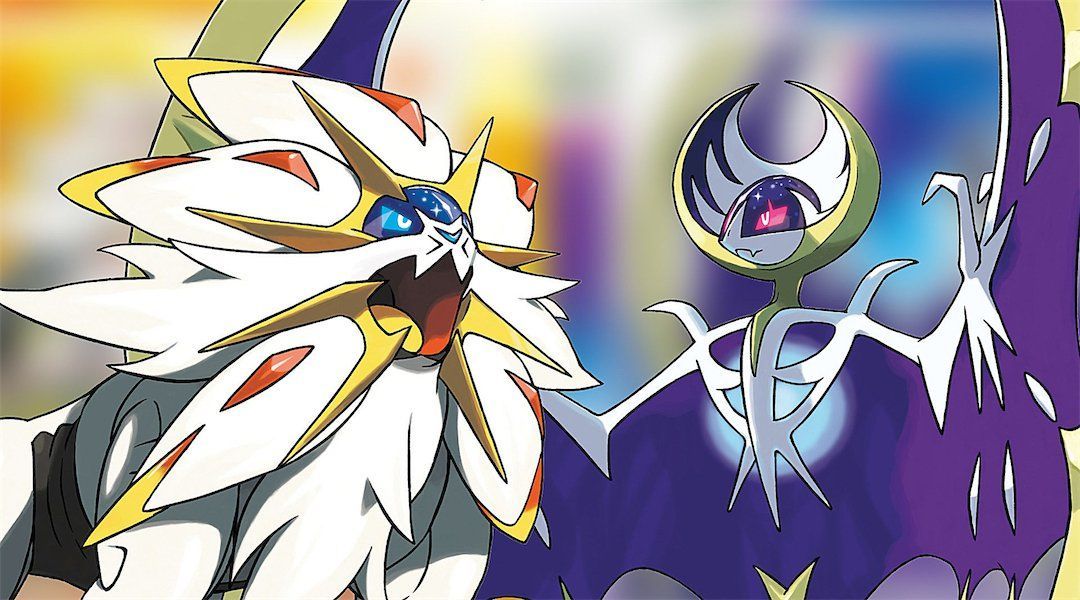
Pokemon Sun and Pokemon Moon Review
By Riley Little 14 November 2016
Hoping to change things up, Pokemon Sun and Pokemon Moon offer one of the most radical departures from the series’ longstanding formula. Fortunately, the gamble has paid off.
If every facet of The Pokemon Company’s 2016 marketing plan hadn’t already made it abundantly clear, this year marks the 20th anniversary of the Pokemon franchise. There’s little question that the series has become a staple of the gaming industry, but recent installments have created somewhat of a nostalgia-based paradox amongst core and casual players; with some claiming that every iteration feels the same, while others state that the series has changed too much to even attempt to get back into it. It’s an incredibly hard audience to cater to, but developer Game Freak has managed to do just that with Pokemon Sun and Pokemon Moon.
Indeed, Pokemon Sun and Moon provide a much desired look back on the original Pokemon Red and Blue versions, while firmly pushing the property towards a new level of depth and quality. At the forefront of this initiative is a narrative surrounded with references to the original installments, a handful of Alola forms based on creatures from the original 151, and a few cameos that many fans of the premier titles will appreciate. More importantly, it offers anyone that’s taken a leave of absence from the games an entry point that offers some familiarity alongside a revamped approach for a new generation. At the risk of sounding hokey with a statement that’s sure to be thrown around in abundance, this is a tried and true evolution of the series.

Which starter Pokemon will you choose?
As much as Sun and Moon honor the past, there’s an entirely new means to go about completing the main narrative. The newfound approach will utilize a bevy of different challenges and tasks that provide players with a way of proving their worth as an aspiring Pokemon Champion. These ‘Trials’ often involve battling super-charged Totem Pokemon, going head-to-head with highly skilled Kahuna, or solving puzzles, with Z-Crystals being offered to those that manage to clear these tasks. Before delving into that item further, it needs to be said that the lack of Gym Leaders and corresponding badges is sure to strike some as odd, but it’s a gamble that has paid off for the franchise.
Taking place in the region known as Alola, the newest adventure takes on an entirely new setting inspired by Hawaii. While the climate of this fictitious area is a bit of a changeup, the way the game handles the exploration of this in-game world is unlike anything witnessed in a core Pocket Monster title to-date. Gone is the traditional grid that trainers will find themselves restricted to while moving, which in turn creates a greater sense of freedom for individuals to take hold of. Across all four of the main islands are various vistas and changes that keep the environments feeling fresh, and there’s so much to explore that fans will find themselves simply wandering around Alola for the fun of it.
Of course, it doesn’t hurt that gamers can now traverse the ecosystem without having a single HM at their disposal. That’s right, select attack slots no longer have to be dedicated to moves such as Cut, Strength, Surf, or Fly, because Game Freak has implemented a means of allowing gamers to simply summon ‘Ride Pokemon’ in lieu of forcing semi-permanent moves on the user’s party of beasts. Being able to see the actual monsters that one’s avatar is riding is cathartic for fans tired of seeing shadowed beings in their place, but it’s truly just nice to not juggle moves amongst the six Pokemon found on any given team.

You’re literally off the grid in Pokemon Sun and Moon.
The new creatures that inhabit the land aren’t all that lacklustre in design or ability either, with a good blend of Pokemon from every generation taking up residence on the islands of Alola. With that said, the focus has clearly been placed on new and original beasts, with alternate forms and typing making for some really strategic options when it comes down to the meta of the turn-based RPG. For instance, there are now two very different types of Ninetails and Exeggutor running around, and while some may cry foul at these designs, it’s great to see some of the more shrug-worthy monsters from Red and Blue running around with a newfound purpose.
Battling has largely been left untouched as well, which is probably for the best for longtime fans. Encounters will still play out in a move-by-move basis, with the dependable rock-paper-scissors formula in which the franchise is built upon remaining in place. One major difference between these games and previous ones, however, is the inclusion of Z-Moves. These attacks are linked to the aforementioned Z-Crystals that are gathered during the course of the game, and they activate incredibly powerful attacks that have the potential to completely change the tide of battle – provided they’re used properly. These moves are limited to one use per duel, much like Mega Evolutions, but they add yet another means of play to an all too familiar system.

Z-Moves add a whole new level of challenge to any key confrontation within Sun and Moon.
Battling aside, it should be noted that players could spend upwards of 20 hours navigating through the core story, which is filled with a welcomed number of twists and turns along the way. This tale is only enhanced through the emotion that characters are better able to convey following an overhaul of the on-screen human models, but these tweaks have come at a cost. 3D-enabled play does not function with the games in any form, and battles featuring more than two Pokemon at a time take a noticeable dip in the ‘frames per second’ department. It’s far from game breaking, but it’s the reality of developing on portable hardware that’s only as powerful as the Nintendo 3DS.
Once the narrative has subsided, there’s still plenty to do in terms of battling and catching rare Pokemon, but several other additions can also keep fans sidetracked. Poké Pelago is one such option that allows users to grow their own berries and Poké Beans – the latter of which can be fed to members of one’s team to raise their fondness of the player. This mode, known as Pokemon Refresh, has several advantages for those that use it properly ( i.e. preventing a knockout, shaking off a debilitating status in the heat of battle, dodging attacks more frequently, and landing critical hits), which makes it a key part of any trainer’s strategy. Meanwhile, the lacklustre Photo Mode is not the nod to Pokemon Snap that many may have hoped for, but it’s an entertaining feature whenever the environment allows for it.
Sun and Moon are the biggest changes that the core Pokemon series has ever attempted. Removing gyms, Hidden Machines (HMs), and altering original Pocket Monsters was a huge gamble – and all of it has paid off. Honoring the franchise’s past while looking to the future must have been a difficult ideal for Nintendo and The Pokemon Company to nail down, but the end result of this undertaking is a pair of lovingly-crafted, must-haves for fans new and old. Truly, this is the celebration of Pokemon that gamers have been waiting for.
TRAILER
Pokemon Sun and Pokemon Moon arrive exclusively for the Nintendo 3DS and Nintendo 2DS on November 18, 2016.
Nintendo provided Game Rant with a physical copy of Pokemon Moon on Nintendo 3DS for review purposes.
